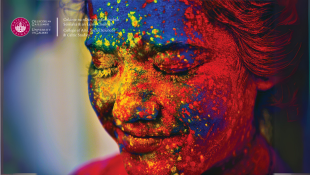-
Courses

Courses
Choosing a course is one of the most important decisions you'll ever make! View our courses and see what our students and lecturers have to say about the courses you are interested in at the links below.
-
University Life

University Life
Each year more than 4,000 choose University of Galway as their University of choice. Find out what life at University of Galway is all about here.
-
About University of Galway

About University of Galway
Since 1845, University of Galway has been sharing the highest quality teaching and research with Ireland and the world. Find out what makes our University so special – from our distinguished history to the latest news and campus developments.
-
Colleges & Schools

Colleges & Schools
University of Galway has earned international recognition as a research-led university with a commitment to top quality teaching across a range of key areas of expertise.
-
Research & Innovation

Research & Innovation
University of Galway’s vibrant research community take on some of the most pressing challenges of our times.
-
Business & Industry

Guiding Breakthrough Research at University of Galway
We explore and facilitate commercial opportunities for the research community at University of Galway, as well as facilitating industry partnership.
-
Alumni & Friends

Alumni & Friends
There are 128,000 University of Galway alumni worldwide. Stay connected to your alumni community! Join our social networks and update your details online.
-
Community Engagement

Community Engagement
At University of Galway, we believe that the best learning takes place when you apply what you learn in a real world context. That's why many of our courses include work placements or community projects.
Spotlight on Research
Past Research
I began my practice as an artist with photography, using an old Nikon 35 mm camera that my father gave me and taught me how to use. Instead of trying to capture images that realistically represented scenes, I played with photography’s ability to mediate by experimenting while shooting and in the darkroom. Through this practice, I became interested in how art can communicate and express ideas in complex ways that open up a range of interpretations and different means of engaging with others. Such an approach embraces the thickness of obscurity as a chance to provoke thought, a means of instigating possibilities for new modes of enquiry and inviting differences in understanding. When I was an undergraduate at Tufts University, I pursued a BA in International Relations and a BFA in Studio Art, engaging in a rich field of inquiry and practice across different disciplines. At this time, I began engaging in other types of artistic practice, including performance art, video, and digital media, as I developed different techniques for exploring and expressing various concepts. My early work engaged with art as a means of political and social inquiry. As a graduate student and early career researcher at Simmons College and the Institute for Doctoral Studies in the Visual Arts, I continued developing my interests in performance, politics, gesture, and technologies. My artistic work and scholarship reflects this constellation of interdisciplinary interests, though there is a persistent focus on questioning our use of technologies using performance as a means of inquiry. In 2009 I was invited to join the Mobius Artists Group, the longest running experimental arts organisation in Boston, of which I am a still a member.
Current Research
In my current research I engage with a shared aesthetics of the maternal and digital technologies – the aesthetics of interruption. The work began while I was pregnant with my first child in 2014, and as a US citizen who only recently had begun living in Ireland, it was a major experience of defamiliarization regarding reproductive biopolitics. I became attuned to other artists engaging with themes of the maternal and reproduction in Ireland, such as Pauline Cummins, Aideen Barry, Laura O’Connor, Áine Phillips, Amanda Coogan, and many more. I noted how many of these artists engage in performance and lens-based media in order to challenge gender-based restrictions and raise awareness of injustices, with their work highlighting the capacities of art to function as a mode of political critique. In addition to publishing about these artists, which include a forthcoming monograph with Bloomsbury Publishing (Strange Mothers: the Maternal, Digital Subjectivity, and the Aesthetics of Interruption), they have influenced my own artistic practice. While I continue to work in lens-based media, I now also engage in creative coding and physical computing in performance as I discover different ways of performing through and with technology. Thus, the aesthetics of interruption is both a concept I explore through writing and scholarship as well as artistic works and events. Some recent art works of note include the livestreamed series Context Collapse, which was created during the first prolonged lockdown of the COVID-19 pandemic; the performance and installation Quickening, which involved a phenomenological study of the border in Ireland through pregnancy and the glitch; and a forthcoming work that considers the future of grief, created in collaboration with Mike McCormack for the Arts in Action series.
Future Research
The COVID-19 pandemic has brought my ongoing research interests at an intersection of performance with the digital technologies centre stage. In addition, the closure of galleries and performance spaces have shifted the capacities to present and engage with performance art during a time when the possibility of being together means remaining physically apart. As such, I have become interested in pursuing other means of presenting performed gestures, including biometric data and livestreaming as an aesthetic encounter. With continued emphasis on performance as a means of approaching human engagement with technology, I shift attention away from problem-solving and technosolutionism to concerns of maintenance, repair, and care through lived experience.



















